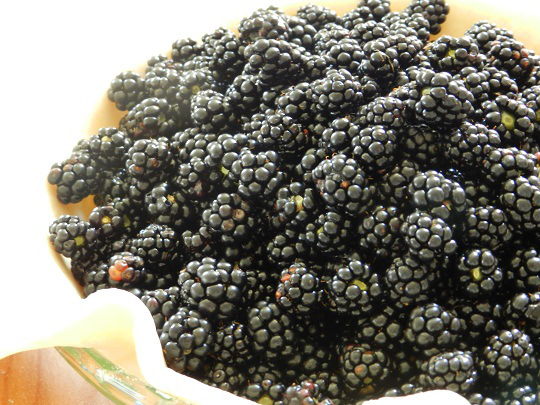Difference Between Blackberry and Mulberry

While they are both put to similar uses, such as making jams, cobblers, and pies, blackberries and mulberries are two different fruits, with distinct tastes and appearances. Colour and shape are the biggest distinguishing features – blackberries range from deep purple to jet black, while mulberries are available in varying shades of red, maroon, or deep purple.
The shape is also a key difference – blackberries are smaller, and tend to be shaped like mini-pinecones, while mulberries are larger, longer, and more oval in shape. Certain varieties of mulberries are also more elongated, growing as large as an average human finger. However, despite the difference in size, the small blackberry is hardier than the mulberry, which is fragile and gets bruised fairly easily.
Instructions
-
1
In addition to their appearance, both berries are also different in terms of origins. The mulberry is from the morus genus and the moraceae family, and is a deciduous tree that is native to Africa and Asia. On the other hand, belonging to the rubus genus and the rosaceae family, the blackberry is a perennial plant interspersed with thorns, which is native to South America and the temperate Northern hemisphere.
When they are picked, mulberries are often picked along with their stems, while blackberries are picked clean off the bush. While blackberry leaves do not serve as more than fodder for grazing animals, the leaves of mulberries trees are popularly used in the cultivation of silkworms. -
2
Blackberry
Technically an aggregate fruit as opposed to a berry (since it is made up of lots of smaller fruits known as drupelets), the blackberry is a small, jet black fruit that is sweet in taste, grows most abundantly in the temperate Northern Hemisphere and South America, and is usually in season from summer to fall.
Red and firm when unripe, blackberries become black, plump, and sweet as they ripen, and been considered an edible fruit by humans for thousands of years. Loaded with antioxidants, blackberries are also enriched with fiber, anthocyanins, salicylic acid, and ellagic acid which is known for its benefits against cancer, bacteria, and viruses. -
3
Mulberry
Large, fleshy and succulent, mulberries come in a variety of tastes and colours – they tend to be tart when light red, and sweeter when they turn maroon or dark purple. In addition to the red (Morus rubra) and black (Morus nigra) mulberry varieties, there is also a white mulberry (Morus alba), which is native to certain parts of eastern and central China.
Peaking in the season between May and August, mulberries are exceptionally low in calories (43 calories per 100 g), and packed full of iron, phenolic flavonoid phytochemicals called anthocyanins (which help in fighting cancer, diabetes, bacterial infections, and neurological diseases), potassium, manganese, and magnesium, as well as B-complex group of vitamins and vitamin K.
- In addition to being eaten as they are, and used in a variety of desserts, blackberries and mulberries can also be used to make wine.







